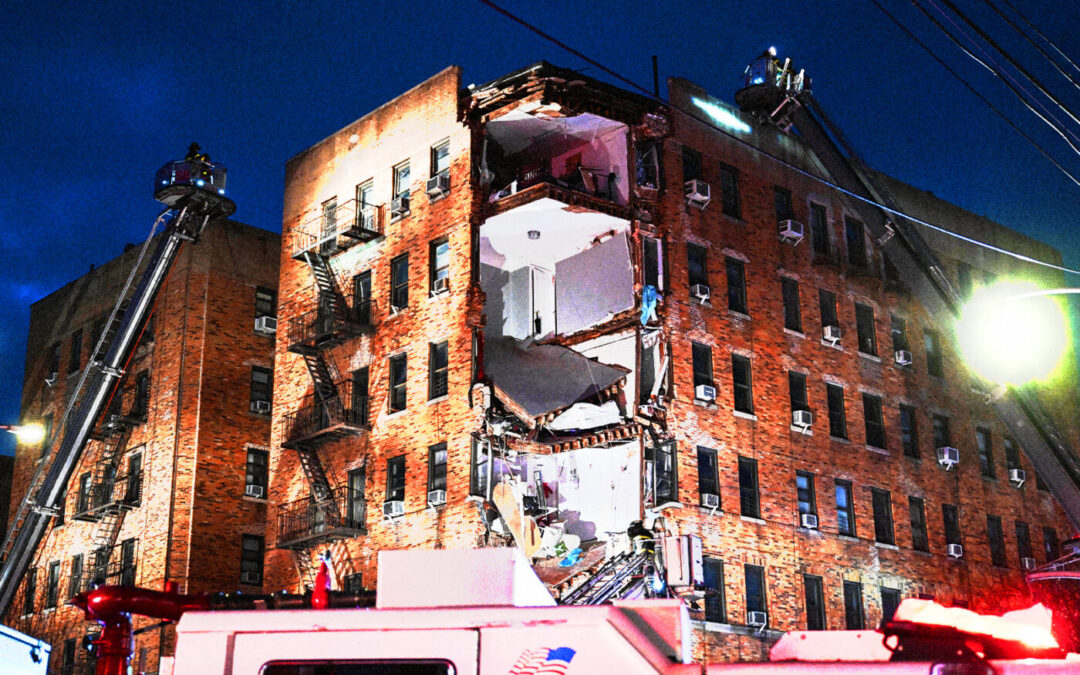NYC Building Collapses: Causes, Consequences, and Lessons Learned

On a crisp autumn afternoon, the sounds of the city bustled around East Harlem. Vendors called out, subway trains rumbled below, and children played on the sidewalks. Suddenly, the city’s rhythm was shattered by a deafening roar. A five-story building on the corner of Park Avenue and 116th Street crumbled into a pile of dust and debris, sending shockwaves through the neighborhood. For residents like Miguel Santos, who ran a small bakery next door, life would never be the same. In just a few seconds, the landscape of the block changed forever.
New York City, a metropolis with some of the oldest and most densely packed structures in the country, has seen its share of building collapses over the decades. What causes these tragedies, and how can they be prevented?
1. The Prevalence of Building Collapses in NYC
Building collapses are not common occurrences, but they are significant enough to pose a serious concern for the city. According to the NYC Department of Buildings (DOB), there were 36 reported building collapses between 2010 and 2020, ranging from partial structural failures to complete nyc building collapse.
A Broader Look: Nationwide, the U.S. averages 1,000 building collapses annually, according to data compiled by safety organizations. These incidents may result from a combination of factors, including structural weaknesses, neglected maintenance, and poor construction practices.
Stat Insight: In 2021, the DOB reported that about 20% of reported structural incidents in NYC involved buildings over 75 years old, emphasizing the vulnerability of the city’s aging infrastructure.
2. Common Causes of Building Collapses
Aging Infrastructure: New York City is home to some of the oldest buildings in the United States, many of which date back to the late 19th and early 20th centuries. Over time, the materials used in these older structures, such as wood and masonry, degrade and become susceptible to failure if not properly maintained.
Deferred Maintenance: One of the most cited reasons for building failures in NYC is a lack of adequate maintenance. According to a report from the New York Building Congress, over 40% of nyc building collapse older than 50 years have documented maintenance issues. Cracks in the facade, water infiltration, and rusting beams are all warning signs that, if ignored, can lead to catastrophe.
Poor Construction Practices: In some cases, shortcuts taken during initial construction or unauthorized renovations can weaken a building’s structural integrity. The collapse of a building in the Bronx in 2018 was attributed to unauthorized alterations that compromised load-bearing walls, a finding that sparked discussions about stricter regulation and oversight.
Weather and External Forces: Heavy snow, hurricanes, and flooding can exacerbate existing structural issues. The DOB noted that incidents related to weather conditions increased by 15% from 2015 to 2021, highlighting how natural forces put pressure on aging structures.
3. A Case Study: The 2014 East Harlem Explosion and Collapse
One of the most tragic examples of a building collapse in recent nyc building collapse history was the 2014 East Harlem incident. On March 12, a gas leak led to an explosion that destroyed two five-story buildings, killing eight people and injuring more than 70 others.
Findings: An investigation revealed that an aging, poorly maintained gas pipeline was the culprit. The National Transportation Safety Board (NTSB) found that the pipeline, installed in 1887, had not been adequately inspected or maintained, contributing to its failure.
Community Impact: The incident sent shockwaves through the community. Survivors recounted the horror of being trapped under rubble, while first responders worked tirelessly to rescue those buried beneath debris. The event underscored the critical need for infrastructure updates and more stringent safety protocols.
Legislative Outcomes: In response, the city implemented stricter gas pipeline safety measures and increased funding for infrastructure checks. However, critics argue that the changes have not gone far enough, as more recent gas-related incidents continue to be reported.
4. Prevention Measures and Regulatory Oversight
Building Inspections: NYC has long had inspection programs aimed at preventing such tragedies. Local Law 11, also known as the Facade Inspection Safety Program (FISP), mandates that buildings over six stories must have their facades inspected every five years. However, this program does not cover smaller, older buildings, many of which are most at risk.
DOB’s Role: The Department of Buildings conducts routine inspections and follows up on complaints. In 2023, it was reported that the DOB performed over 150,000 building inspections across the city. Despite these efforts, critics highlight that understaffing and budget limitations often hinder thorough investigations and timely follow-ups.
Emergency Preparedness: NYC has also improved its emergency response to building collapses. Specialized units within the NY Fire Department (FDNY) are trained to handle building collapse rescues, reducing response times and improving survival outcomes in such incidents.
Challenges to Full Implementation: Despite the regulations in place, enforcement is still an issue. Reports suggest that up to 25% of inspections reveal violations that go unresolved for extended periods. In the case of Miguel Santos’ bakery, an adjacent building’s reported structural issues had not been fully addressed, contributing to the severity of the collapse.
5. Public Awareness and What Residents Can Do
Spotting Warning Signs: Residents are encouraged to report any signs of structural distress in their buildings. Common indicators include visible cracks in the walls, water leakage, uneven floors, and doors that no longer close properly.
Tenant Rights: New York tenants have the right to demand that landlords address structural issues promptly. If landlords fail to take action, tenants can escalate complaints to the DOB or pursue legal action.
Community Initiatives: In some neighborhoods, local community boards have taken it upon themselves to organize building safety workshops and distribute literature on spotting early warning signs of structural failure.
6. Steps Forward: How NYC Can Improve
To prevent future collapses and save lives, experts suggest several initiatives:
Increased Funding for Inspections: More funding would allow the DOB to hire additional inspectors and reduce the backlog of pending building checks.
Upgraded Infrastructure: Retrofitting older buildings and updating gas and plumbing lines should be a city priority. The NYC Building Resiliency Task Force estimates that a comprehensive upgrade could reduce the risk of collapse in aging buildings by up to 30%.
Stricter Penalties: Penalties for non-compliance with building maintenance regulations should be increased to ensure landlords prioritize safety.
Conclusion: Building Safety Is Everyone’s Responsibility
For Miguel Santos and many others affected by building collapses, the scars run deep. While nyc building collapse has made strides in improving building safety and regulations, much work remains to be done. By investing in robust inspection programs, upgrading aging infrastructure, and fostering public awareness, the city can prevent these tragic events and protect its residents.
Building safety is not just the responsibility of city officials and landlords—it’s a collective effort that involves policymakers, tenants, and the community as a whole. Only then can we ensure that the city’s buildings remain as resilient as the people who live and work within them.
You may also read





